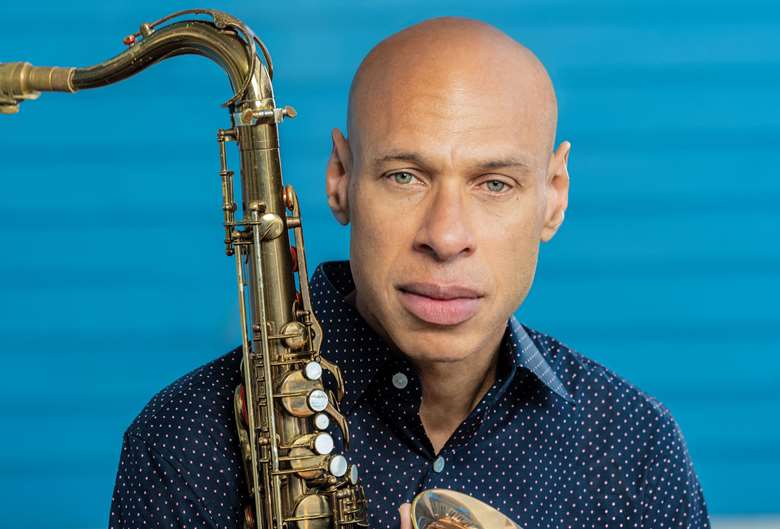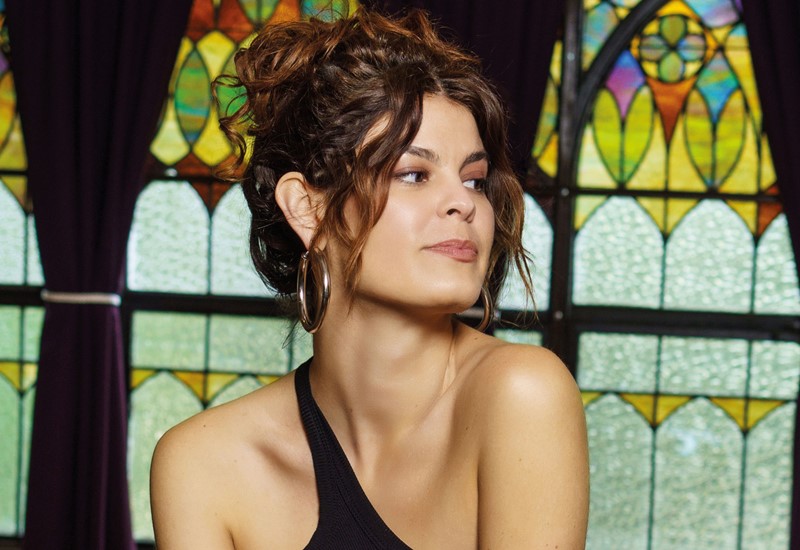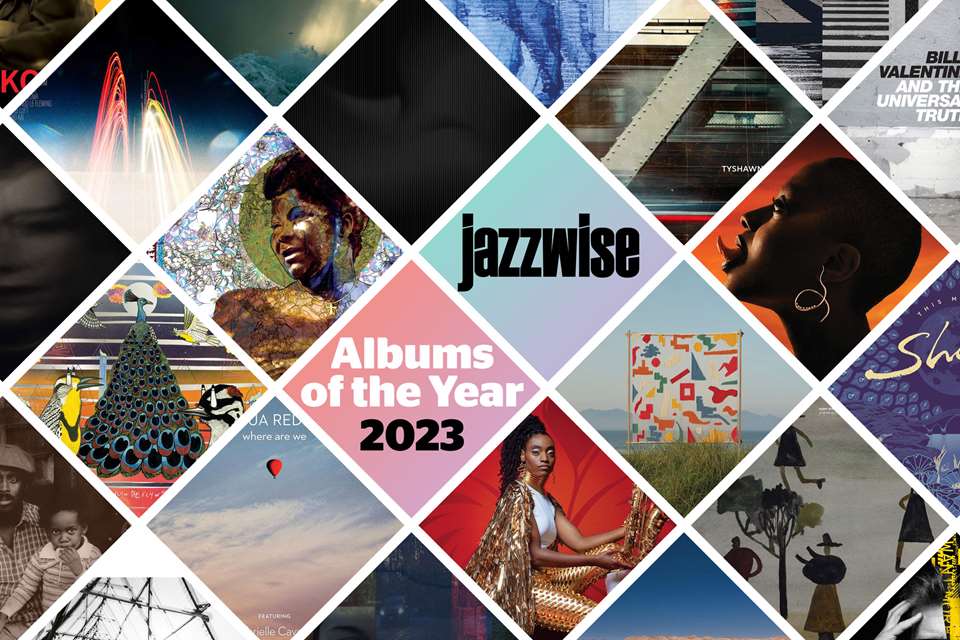Joshua Redman interview: “I wish I could sing but I can’t, so I try to sing through the saxophone”
Selwyn Harris
Friday, December 1, 2023
Joshua Redman's album 'where are we' is his first to feature a vocalist, Gabrielle Cavassa. He tells Selwyn Harris about this new development in his stellar career that also marks his debut on the Blue Note label

Earlier in his career, Joshua Redman had described his creative process as, “preserving my roots while extending my branches”. Fast forward to 2023, and little has changed. Redman might be into the autumnal period of his jazz life, but the recent album release where are we is something of a new departure for the 54-year-old saxophonist-composer. It’s his first-ever recording as leader that features a vocalist.
Redman has arguably spent more time in recent years preserving yet also reinvigorating his roots, rather than extending his branches: both his 1990s-formed acoustic quartets have recorded again, including the high profile reunion of Moodswing alongside Brad Mehldau, Christian McBride and Brian Blade, and an exhilarating tribute project Still Dreaming honouring the Ornette-inspired legacy of his distinguished father Dewey. On where are we Redman achieves another first, it being his recording debut for the Blue Note label. How that feels has clearly only one answer.
“It feels wonderful and I’ll savour it for all it’s worth and for as long as it lasts… You never know these days,” he adds, laughing knowingly while speaking to me on a Zoom video call from his LA home. “Blue Note has had such a profound impact on my own development musically but also I feel spiritually. Albums that’ve been the most influential for me were on that label: Herbie Hancock’s Maiden Voyage, McCoy Tyner’s The Real McCoy, Dexter Gordon’s GO, and Wayne Shorter’s Speak No Evil and all the records he made in the 1960s. I guess Wayne is heavy on our minds and consciousness since he passed recently. Almost 30 years I’ve been making records, and all were basically part of the Warner family and then Nonesuch. That’s been an incredibly long run and I’ve had an incredible experience as a recording artist. This is a new adventure.”
Indeed, Redman is in a unique position for a late 20th century jazzman in terms of his major label affiliations. Graduating with a degree in Social Studies from Harvard University, he deferred a place at Yale Law School, instead hitting the New York jazz scene, winning the 1991 Thelonious Monk International Jazz competition before recording his eponymous debut for Warner in 1993. His profile sky-rocketed on the tidal wave of a 1990s ‘classic jazz’ resurgence, picking up ‘Artist of the Year’ in both the JazzTimes and DownBeat critics’ polls, and later touring with the likes of Pat Metheny and Chick Corea. While the days of the major labels caring about jazz has long gone, the Universal-owned Blue Note label is a rare exception.
“I think so for sure,” he says. “I’m just starting to get to know the folks at the label. I started working with Don Was, the president of the label in 1994. He had brought me in on various interesting, very atypical projects and he’s a great musician, a great spirit. He’s so mellow but so smart and has such a keen acumen for things. Definitely it’s people who know and care about the music. Same was true for Nonesuch and Warner jazz before that. Nonesuch is a major label but it had that small family type of feel. I feel like I’ve been lucky. The labels that are successful probably on some level have that small label aesthetic and ethos even if they’re part of a larger configuration.”
Redman’s longevity at the highest level might be due to his uncompromised accessibility as well as charismatic presence. His imaginative soulful eloquence on tenor/soprano sax and energetic groove sensibility seems to speak to people of all jazz generations. From remodelling ‘classic’ acoustic and electric organ trio jazz (Elastic Band) and Third Stream-type set-ups through to contemporary-coloured partnerships with the likes of Brad Mehldau and The Bad Plus, it comes as a surprise that where are we is his first as leader to inhabit the world of vocals.
“It certainly has been a long time coming,” he says. “I didn’t ever really know it was going to come! The human voice is the glorious, most magical instrument in the world. I wish I could sing but I can’t, so I try to sing through the saxophone. My role in instrumental jazz has always been as a primary lead melodic voice, a role I cherish. But I think for much of my life in jazz I’ve been torn between really enjoying making one of the primary melodic statements in the music and feeling a certain sense of envy for rhythm section players who get to embed themselves so deeply in the groove and the undercurrent of the music, and play a more obvious supporting role within the music all the time. But this was an opportunity for me to at least escape it for a while and find another role: as an accompanist and as a supporter but also as an equal conversationalist.”

Gabrielle Cavassa (photo: Zack Smith)
The vocalist is the Californian, New Orleans-based Gabrielle Cavassa, who Redman originally met and got to know virtually (“a very strange and completely atypical way of development for me”) during the 2020-21 lockdowns. But sharing an intimate space with Cavassa’s warm yet commanding vocal on the recording, Redman finds a new lease of life. An echo perhaps for those who remember Redman’s role as Lester Young in Robert Altman’s 1996 movie Kansas City; maybe Cavassa could be the Lady Day to his Pres.
“We experimented throughout the record trying not to just fall into that thing where she states the melody and I’m just obligato-ing behind her or around her,” he explains. “I feel like I’ve finally gotten to a point in my own development where I feel comfort, acceptance and maturity in my own melodic voice. I feel like finally I’m able to sing through the saxophone in an instinctive but in a relaxed way. To really have a strong lyrical voice, in a way this album has captured that perhaps better than any other. It’s at a time when my voice isn’t just the primary melodic voice. That’s a paradox.”
Redman would never feel comfortable with the purism of the 1990s neo-bop renaissance. His open-mindedness as far as repertoire is concerned meant as early as his 1993 debut recording, he was blowing raw and funky on James Brown’s ‘I Got You’, later adding Bob Dylan and The Beatles to his repertoire. But then rock music was always in the background while growing up.
“My interest in music from an early age certainly wasn’t limited to jazz,” he says. “My mum had all my dad’s records and she loved Coltrane and Cannonball Adderley but also Indian, African and Norwegian music. She also liked some classical and The Beatles, Aretha Franklin, Otis Redding, some blues, Sonny Terry. I really appreciate lyrics, but they’re often the last thing I hear in songs. Certainly with this project I became much more aware and appreciate it more. Gabrielle has this quality: an openness, intimacy and vulnerability where she really draws you in.”
The album has a theme running through it with songs referencing various locations in the United States. Redman’s band includes long-time collaborators: pianist Aaron Parks, drummer Brian Blade and bassist Joe Sanders, and a handful of top-notch guest soloists who’re matched with their respective hometowns; we hear Nicolas Payton who plays on ‘Do You Know What it Means to Miss New Orleans’ and Kurt Rosenwinkel, on Bruce Springsteen’s ‘Streets of Philadelphia’.
“I hate to use the word, but I guess I have to,” he says. “The ‘concept’ emerged early on when we were trying to find songs. The repertoire we could choose from was so vast. So the concept of songs about ‘places’ in the United States emerged more as a way to focus my attention more and not be overwhelmed by all the possibilities. So it was initially for me a kind of formulaic concept. At one point I wasn’t convinced that it was a concept that would sustain itself. It was never something that was at the fore of the creative process. But it somehow did survive and I think it does colour the meaning of the album. The meaning revealed itself. This was a record that the meaning revealed itself in the making of it.”
“I wrote the music to that song five days after the murder of George Floyd and it is perhaps the only time where I ever felt like I’ve written a piece of music directly in response to an event in my life and also in the world”
Songs tend to be slow-andante tempo and celebrate a post-pandemic togetherness as well as a longing and loss connected with time and place. On a few tracks, Redman interpolates songs that on paper are incongruously worlds apart; one of them being a sharply-executed interaction between Count Basie’s 'Goin’ to Chicago' and songwriter Sufjan Stevens’ 'Chicago'.
“I’m deeply suspicious of concepts,” he says. “This sort of mash-up of elements from different songs based on only the fact of their reference to the place in the title, it’s not an organic idea. Over time I found not just with planning albums, but also writing music is that sometimes you can find some of the most interesting and soulful creative expressions out of frameworks that maybe are the antithesis of them. I always used to feel like I can only write a tune when I feel inspired. I have to have a good idea to start with. But I’m not necessarily that inspired all the time, and just out of the blue to write, sometimes I took something that’s dryer, analytical and concrete, even if it’s like an intervallic relationship or a mathematical thing. I’m less fearful of those as starting points now cause I think that sometimes all you need is some sort of rubric, some kind of framework, upon which you can then start allowing your instinctual creative process to hopefully weave something
that’s inspired.”
Redman is usually someone who steers clear of making political ammunition out of his music, but here he not only includes a version of Coltrane’s ‘Alabama’ but an original ‘After Minneapolis (face towards mo(u)rning’)’ for which he has written the lyrics, achieving yet another first for him. But, as he explains – in a refreshing standpoint in the context of our over-opinionated world – his approach is to ask questions rather than to presume to know all the answers.
“I wrote the music to that song five days after the murder of George Floyd and it is perhaps the only time where I ever felt like I’ve written a piece of music directly in response to an event in my life and also in the world,” he says. “When we were starting to plan out the concept, I thought maybe I can put some lyrics to it and I showed them to Gabriella and she thought it could work. There certainly are aspects to the album that deal with themes of social justice. I have pretty strong political, moral and ethical convictions, but that aspect has never been something that I felt I could bring naturally into my music. I deeply admire musicians who do that and have done that.
"I guess this record is less a series of declarations or statements about the state of our world or country. I feel it’s more important to pose questions by juxtaposing these different feelings, ideas and aspects of the American myth with whatever the reality might be.”
Read the review: where are we
This interview originally appeared in the November 2023 issue of Jazzwise. Never miss an issue – subscribe today
